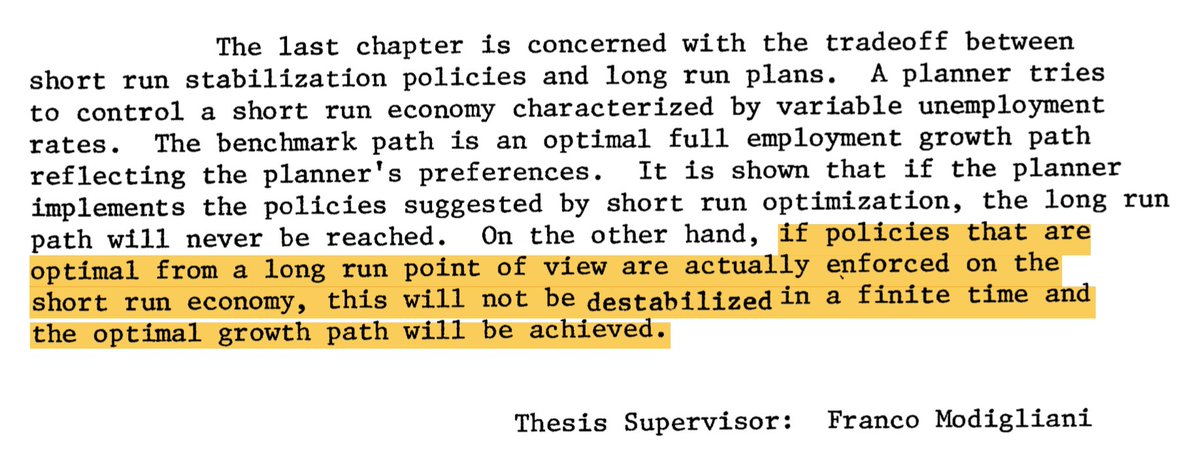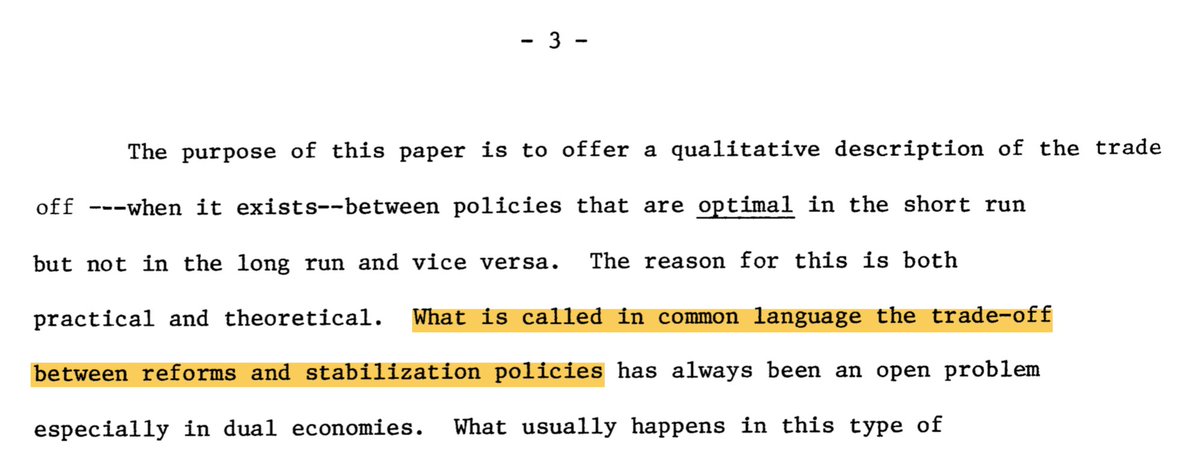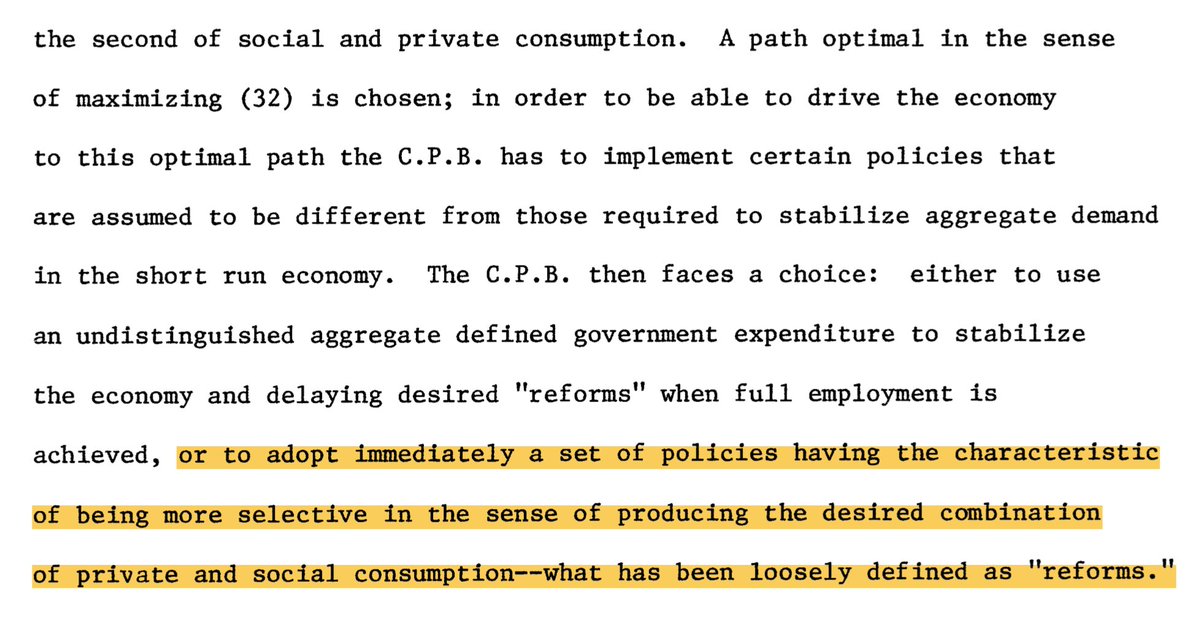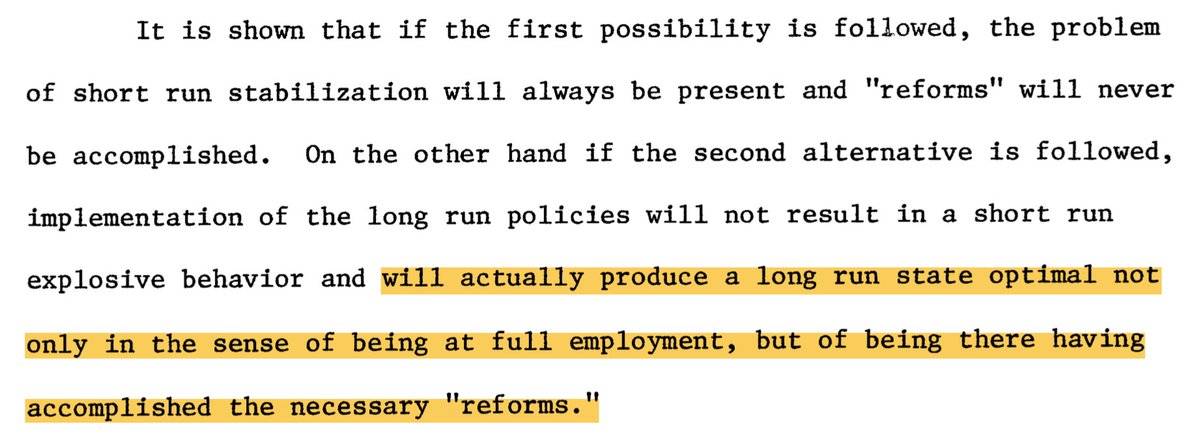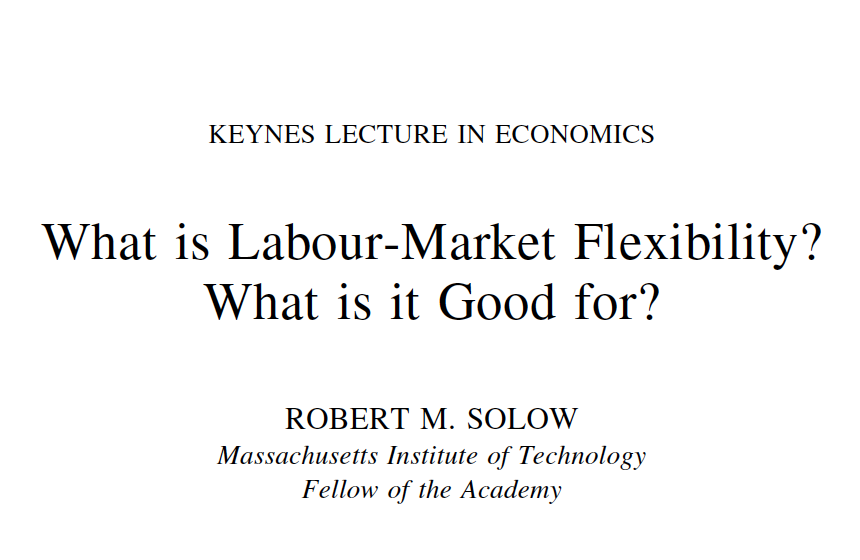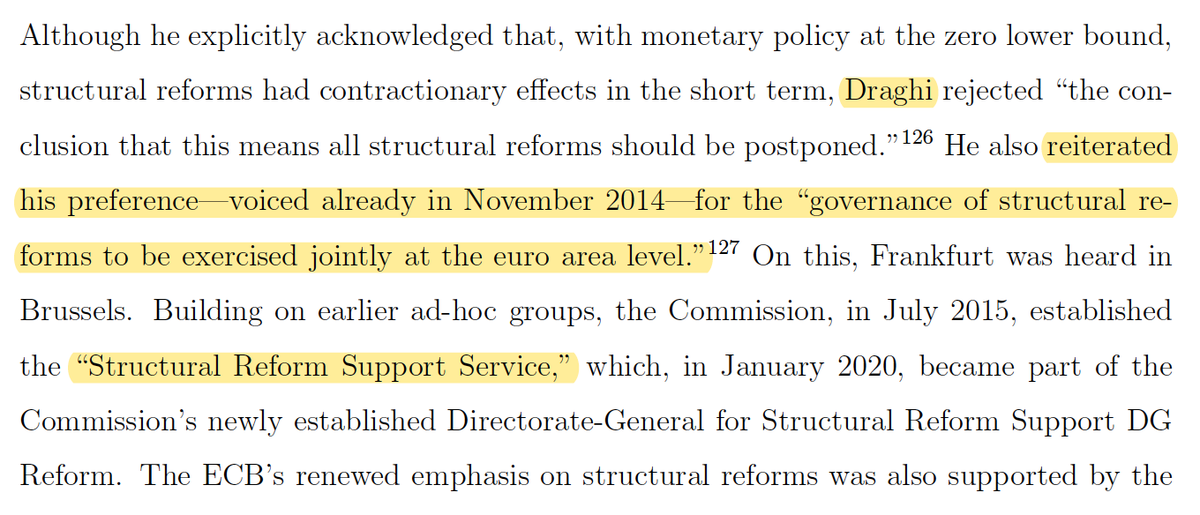Draghi’s Recovery Plan for Italy mentions productivity and competitiveness 50 times. What is it – Keynesian investment program or good old structural reform?
Both! To see why, let’s take a *little* step back: Draghi’s 1976 PhD dissertation at MIT. Bear with me. 1/n
Both! To see why, let’s take a *little* step back: Draghi’s 1976 PhD dissertation at MIT. Bear with me. 1/n
Draghi’s thesis fully articulates the theory that came to bring us structural reforms: A planner opting for short-run stimulus will never reach the optimal long-run path. By contrast, enforcing optimum long-run policies today will *not* have negative short-run consequences. 2/
An instructive (and hilarious) detail: Draghi was a structural reformer avant la lettre: He uses the term “reform” exactly as it would come to be used in “structural reforms”. Except that the concept didn’t exist at the time. Draghi had to use quotes: “reforms”. 3/
There’s another curious anticipation of future developments. Noting that “the common finding is a positive relationship between real wages and employment”, Draghi seeks to refute that finding, describing it an artifact of faulty methodological choices. 4/
Structural reformers *must* reject the idea of a positive wage-employment relationship because SRs are supposed to boost employment precisely via lower real wages. None other than Solow mocked this, in a 1998 paper, as “your basic European central banker’s folk-theorem” 5/
Enough on Draghi’s dissertation. On the broader intellectual and institutional configuration that produced Draghi (and Yellen), read @adam_tooze. I hear @b_judah is writing something, too. 6/ https://foreignpolicy.com/2021/04/01/janet-yellen-mario-draghi-italy-united-states-technocrats-capitalist-democracy/">https://foreignpolicy.com/2021/04/0...
On the international history of structural reforms, read the masterful article by @Kentikelenis and Sarah Babb.
https://www.journals.uchicago.edu/doi/abs/10.1086/702900">https://www.journals.uchicago.edu/doi/abs/1... 7/
https://www.journals.uchicago.edu/doi/abs/10.1086/702900">https://www.journals.uchicago.edu/doi/abs/1... 7/
As ECB president, Draghi talked about structural reforms A LOT: “In every press conference…, I have ended... with a call to accelerate structural reforms.”
See below our study of the incredible saga that is the ECB’s structural reform advocacy. 8/ https://twitter.com/BJMbraun/status/1371829899078549510?s=20">https://twitter.com/BJMbraun/...
See below our study of the incredible saga that is the ECB’s structural reform advocacy. 8/ https://twitter.com/BJMbraun/status/1371829899078549510?s=20">https://twitter.com/BJMbraun/...
From our study of the ECB, and from Crespy and Vanheuverzwijn’s analysis of European Semester documents, we know that beginning with the Juncker Commission, the structural reform discourse shifted towards what has been dubbed “social investment.” 9/ https://link.springer.com/article/10.1057/s41295-017-0111-0">https://link.springer.com/article/1...
What we’re seeing with the EU Recovery Fund, and Draghi’s Recovery Plan, then, is the most sophisticated attempt yet to combine “short-run stabilization” and “enforcement of long-run reforms.”
What Draghi has learned: There a trade-off after all. 10/ https://www.bloomberg.com/news/articles/2021-04-27/draghi-bets-261-billion-euros-to-redesign-italy-s-economy">https://www.bloomberg.com/news/arti...
What Draghi has learned: There a trade-off after all. 10/ https://www.bloomberg.com/news/articles/2021-04-27/draghi-bets-261-billion-euros-to-redesign-italy-s-economy">https://www.bloomberg.com/news/arti...
The ultimate irony, then: The €750bn European recovery fund that allows Draghi to reinvent himself as public investor in chief is set to reinstate the Commission as structural reformer in chief. 11/ https://twitter.com/BJMbraun/status/1387681511189647361?s=20">https://twitter.com/BJMbraun/...
The Commission will be able to rely on its new Directorate-General for Structural Reform Support, first established in 2015 as the “Structural Reform Support Service.”
Guess who was first pushing for a supranational structural reform agency. END/
https://osf.io/preprints/socarxiv/dp3nv/">https://osf.io/preprints...
Guess who was first pushing for a supranational structural reform agency. END/
https://osf.io/preprints/socarxiv/dp3nv/">https://osf.io/preprints...

 Read on Twitter
Read on Twitter
